News
More native flowering plants face extinction
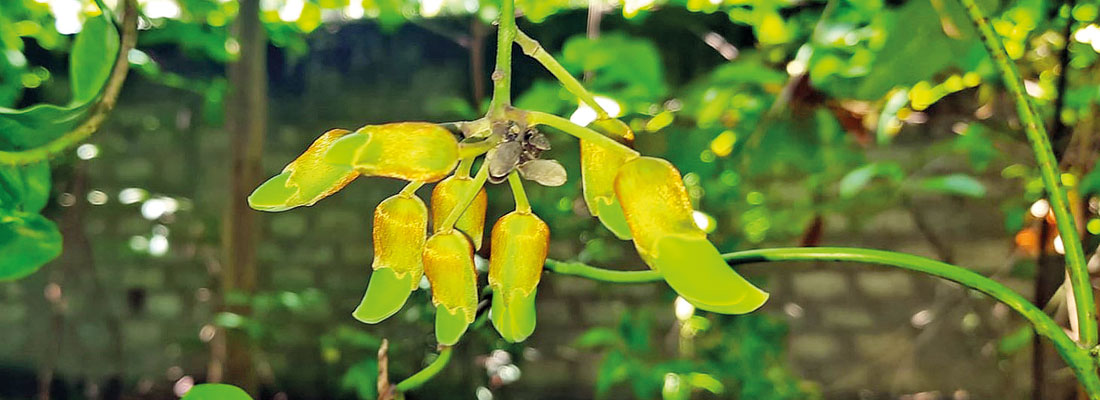
Mucuna gigantia-Fabaceae: Native, critically endangered species recorded after 170 years
Sri Lanka has published its updated list of threatened plant species last month after a nine year gap.
The National Red List of the Conservation Status of the Flora was made known at a virtual ceremony by the Ministry of Environment and by experts involved in compiling it.
This latest edition shows 48.4% of flowering plants and 59.1% of ferns as threatened, which is an increase of the threats of extinction compared with the 2012 list.
Sri Lanka is home for different categories of plants collectively called ‘flora’, such as flowering plants (angiosperms), ferns, bryophyeste, seed plants, fungi etc. The latest evaluation was done for the first three categories of plants, angiosperms, ferns, and seed plants.
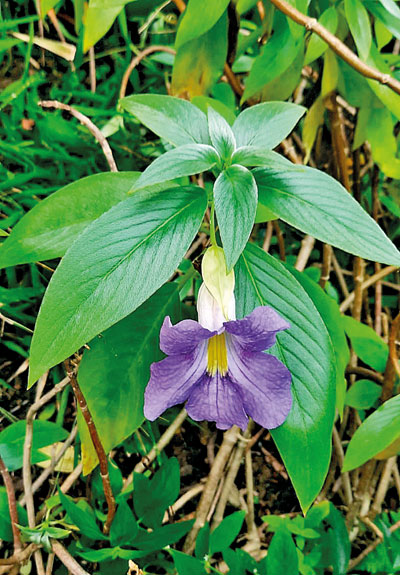
Henckelia mooni (Gesneriaceae ): Rare endemic endangered species
Sri Lanka has 3,087 species of angiosperms with 1,496 species (48.4%) now threatened.
Out of the country’s 350 species of ferns, 207 (59.1%) are threatened.
The threatened levels of the endemic species within these two plant groups are more alarming, with out of the 863 endemic flowering plants, 625 endemics (72.4%) are threatened. Of the country’s 42 endemic ferns, 28 (66.6%) are threatened.
“Extinction of any of these plants that are endemic to Sri Lanka would mean, they would be lost from the entire Earth,” said Dr. Siril Wijesundara, the chairman of Flora Expert Committee. He spoke at the launch of the report.
He said the list could be a catalyst for conservation and policy change.
The lists follow criteria of the International Union for Conservation of Nature (IUCN) in 1964 which is considered as the world’s most comprehensive inventory of the conservation status of biological species. The process evaluates a species into one of its nine categories: Not Evaluated, Data Deficient, Least Concern, Near Threatened, Vulnerable, Endangered, Critically Endangered, Extinct in the Wild and Extinct. A species is considered ‘threatened’ if its status has fallen into categories of vulnerable, endangered, or critically endangered.
While IUCN maintains a global red list, each country has its own National Red Lists.
Sri Lanka started publishing national red lists in 1999 where the IUCN country office did the evaluations for initial reports. Since 2012, the evaluation has been coordinated by the Biodiversity Secretariat with consultation of a large number of experts.
The National Herbarium of the Department of National Botanic Gardens was the technical collaborator of the evaluation of flora.
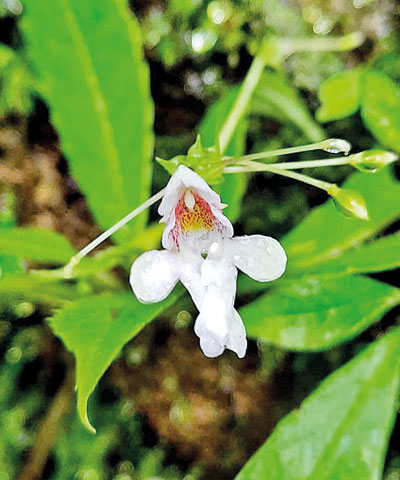
Impatiens leucantha-Balsaminacee : Rare critically endangered endemic species
Dr. Subhani Ranasinghe, its deputy director, said the Red List is an outcome of a team effort.
A highlight of the Red List 2020 is that three out of the five plant species listed as ‘extinct’ by the 2012 evaluation because they were not seen for more than a century, had been rediscovered. All three of these plants were re-discoveries by young field scientist Himesh Jayasinghe.
The rediscovery of crudia zeylanica created much controversy because the first re-discovered tree is in the path of Central Expressway and was due to be cut down. The botanists could locate more crudia zeylanica plants from several locations and stressed the need to do more surveys of the species.
The Red List 2020 also includes provisional checklists of lower plant groups. This includes lichens, bryophytes (such as mosses, liverworts and hornworts), fungi, marine algae, freshwater algae. “Hopefully, the conservation status could be assessed for these lower level plants as well,” Prof. Wijesundara said.
The flora part of the Red List was due to launch in 2020, but got delayed until September this year.
Usually, the list is updated every five years, but it took about eight years to complete the latest list.
“It is a really cumbersome and complex task of validating the presence of rare plants and also to go through international publications to validate the endemism, so the process has been time consuming,” said Pathma Abeysinghe, the director general of the Biodiversity Secretariat.
The National Red List of Freshwater Fish was also launched, but the evaluation for the rest of the wildlife of the country would be further delayed.
“The evaluation mechanism is a com plex technical process. Since it will take more time to complete evaluation of all the fauna. We are planning to release the evaluation of the rest of the groups one group at a time,’’ Abeykoon, said.
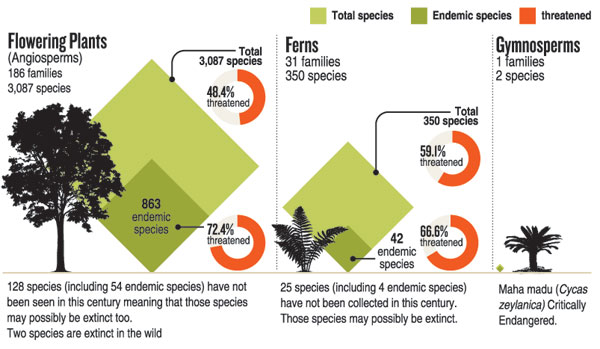

After the discovery of crudia zeylanica(which was named as extinct by 2012 red list evaluation) from Daraluwa Expressway construction site, several trees like this one were discovered in Negombo, but its status has been retained as ‘Critically Endangered’ in the Red List of Flora 2020. Pix courtesy Bhathiya Gopallawa

Sonerila pumila-Melastomataceae: Endemic and endangered herb restricted to montane region.
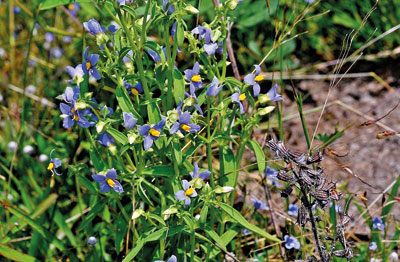
Exacum pedunculatum-Gentianaceae: Critically endangered native species
| Biodiversity framework on the table The United Nations’ Convention of Biological Diversity called its 15th Conference of Parties (COP15) last week after lengthy delays due to the global coronavirus pandemic. Participants at the virtual meeting hosted by Kunming, China, adopted an agreement committing to negotiate an effective post-2020 global biodiversity framework due to be agreed in 2022, said Pathma Abeykoon, the head of Sri Lanka’s Biodiversity Secretariat. “Sri Lanka also supported the 30 by 30 campaign which aims at protecting 30% of the world’s oceans by 2030,’’ she said.
| |

